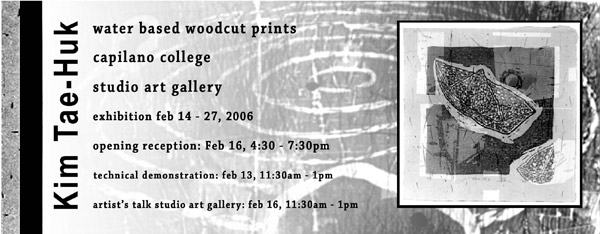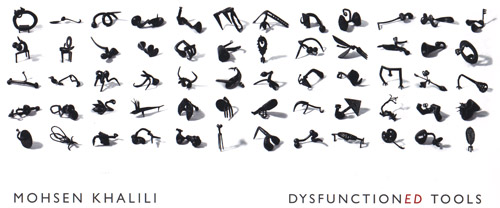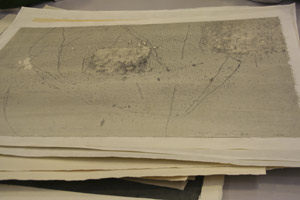Peter Frey exhibition

I am very pleased to introduce friend and fellow-printmaker Peter Frey. Peter is presenting Threads and Fissures, an exhibition of his photographs and prints at the Capilano College Studio Art Gallery.
Opening reception: Thursday, November 9th, 4pm – 7 pm.
Exhibition runs November 9th until December 5th, 2006
Gallery hours: 8:30am – 4:30pm Monday – Friday
Capilano College Studio Art Gallery
2055 Purcell Way, North Vancouver, BC
A Google Map for directions.
Here is Peter’s artist statement:
I began expressing myself through art quite late in my life, when I was living in India, where I studied and practiced a form of yoga called Darshan Yoga – Yoga of Perception. Ideally, when one is in a state of perception, one is fully engaged and the thinking mind is quiet and the exquisite richness of life, the inner and the outer world have an opportunity to touch us.
For about 4 years in India, the photographic camera took me from the inner world of meditation outside into fields, villages and mountains. Photography became a means to look at and admire the world in a simple and direct way. When I left India, I began to study photography in a formal way, both in New York and later in Chicago, and my work became more self-reflective. I began to include my own body in the work to speak of the relationship between the self and the world, between the inner and the outer.
I have chosen for this exhibition a few works from that period. Most of the work shown has been made since becoming a member of the art institute here at Capilano College.
I have used the word ‘threads’ for one of the names for this show to indicate the idea that there are common threads, or themes linking together these pieces, which span a period of about twenty years. But the threads that link and hold together, that hold my attention fully engaged in my creative work, sometimes break. These threads that link become the fence that separates, what has been flowing easily is interrupted, what has been whole breaks – and I am disappointed. But there is an other side to such breaks, fissures, cracks, ‘mistakes’, which is perhaps expressed when we speak of breakthrough and which Leonard Cohen has so beautifully put in this line:” there is a crack in everything, that’s where the light shines in”. A crack is also an opening.
Recently I attended a sweatlodge, where volcanic rocks, heated in a fire, are used in the lodge. One of these rocks, redhot, had a crack halfway through, and it was through that crack that the red glowed with the greatest intensity. In a way the material disappeared and only the light remained, and one was able to look deep inside. Just like the intense glow of this rock soon dimmed, moments of creative intensity, of deep connectedness, of glimpses deep inside the fabric of something, rarely last very long and the sense of loss, the breaking of this connection, this fissure, I think can be seen in some of the figures that appear in my work.
A word about my choice of materials and medium:
Printmaking provides a means to create very fine textures. For my eye, fine texture acts in a similar way as very fine fabric, it is sheer and does not cover. Like a veil it allows us, hopefully, a chance to see a little inside, behind the surface, behind the picture plane. In this way I also see the series of leaves shown here less as forms and more as openings, or windows through which one might gaze into a landscape that is at once minute and very large in scale.

Spontaneous Alchemy: OM/MO 2002. ©Peter Frey, monoprint
UPDATE Nov.9th: We’ve just come back from the opening. It’s a stunning show with a large body of work, consisting of photographs, mixed media works and inkjet prints. If you are in the area or coming to town, do come see it! Here’s Peter next to his piece Leaf from Petals/Reversal, an inkjet print with coloured pencil:












